LABEL #1
OPTIONAL :
- 1 former - Ref. OSB_20_C
- 1 mini airplane 3D stamp - Ref. TL_8817
- Heavy handle for mini 3D stamp - Ref. TL_8190_01
- Guide for stamps - Ref. TL_3603_00
1. CUT THE PIECES
- Using the silver pencil trace the main piece.
- Cut out the rectangle using a ruler and a cutter
- To cut the 1.5 x 22 cm strap we used a strap cutter.
The pencil is erasable on most leathers with a simple eraser (do not use on vegetable tanned leather). We advise you to do a test beforehand to validate the erasable function on your leather. 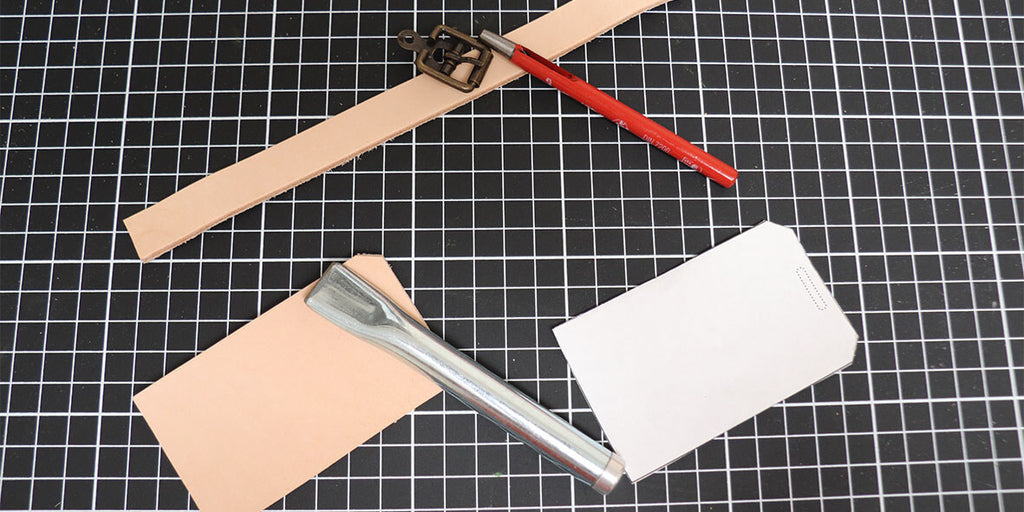
2. DRAW 2 LINES USING A FORMOIR
To style the main piece, draw 1 line on each length using a shaper. 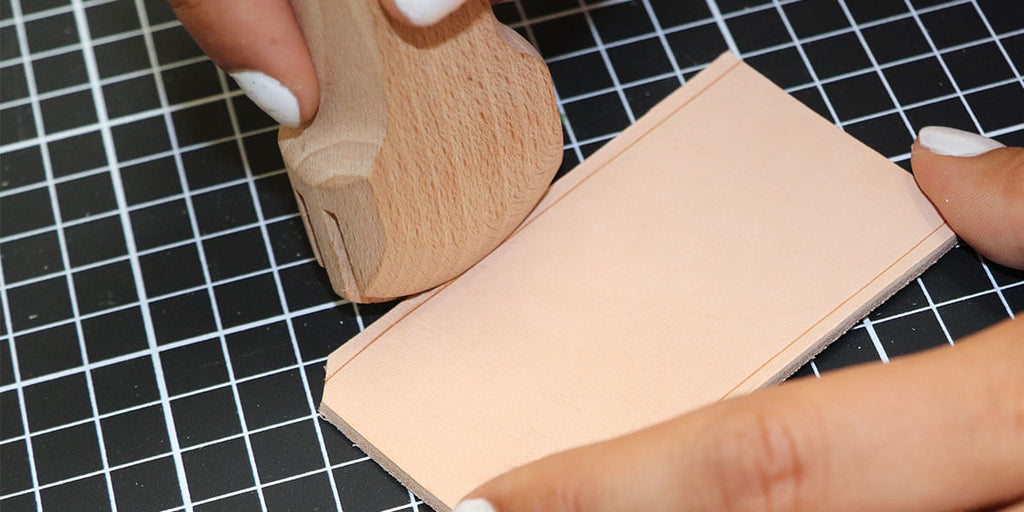
3. TYPE LETTERS AND NUMBERS
Wet the leather with a sponge and a little water. Then strike the letters and numbers using the guide for stamps and a mallet. 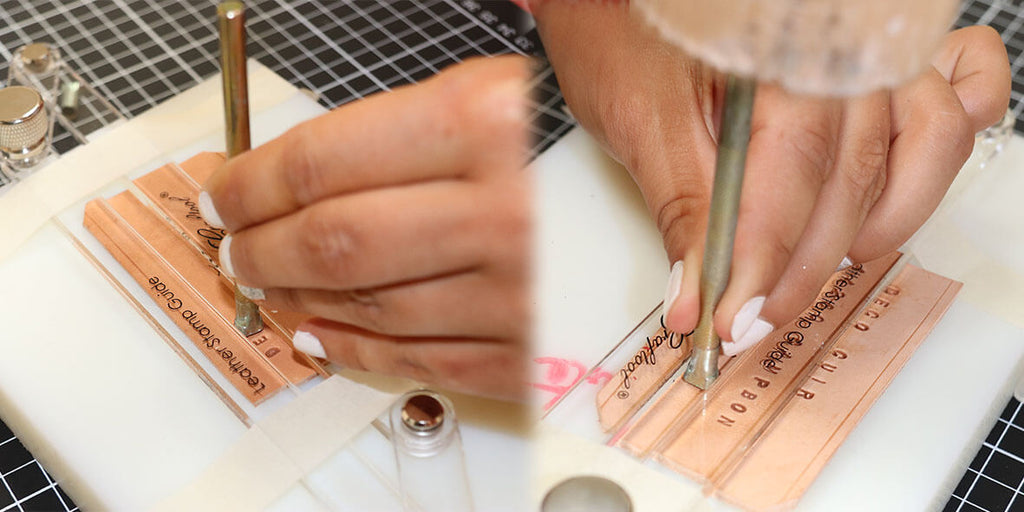
4. MAKE AN ENCHAPURE (OBLONG HOLE)
Make a notch using the cookie cutter. 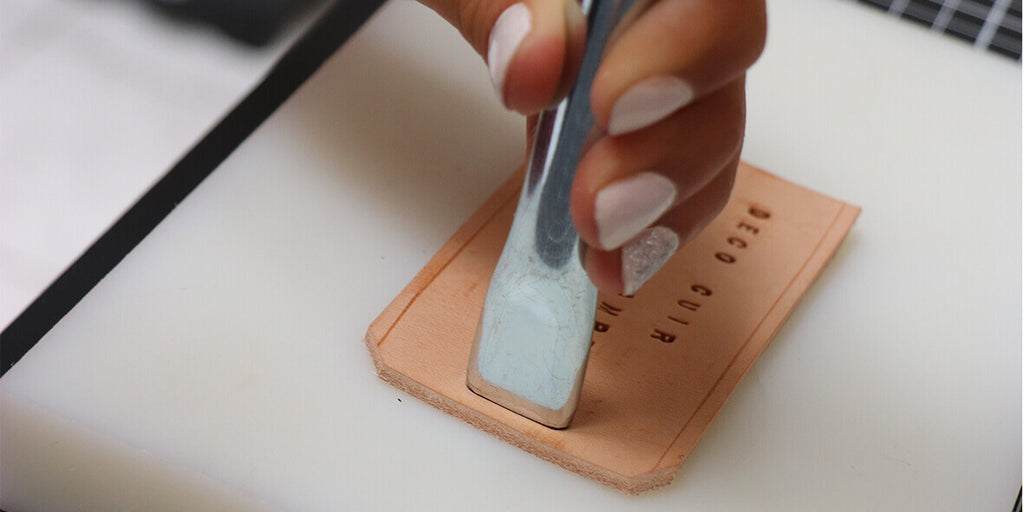
5. INSTALL THE LOOP WITH CLEVIS USING A RIVET
Using a setting tool (here an impact handle) and a 3 mm punch: place the buckle using a T3 double-cap rivet. 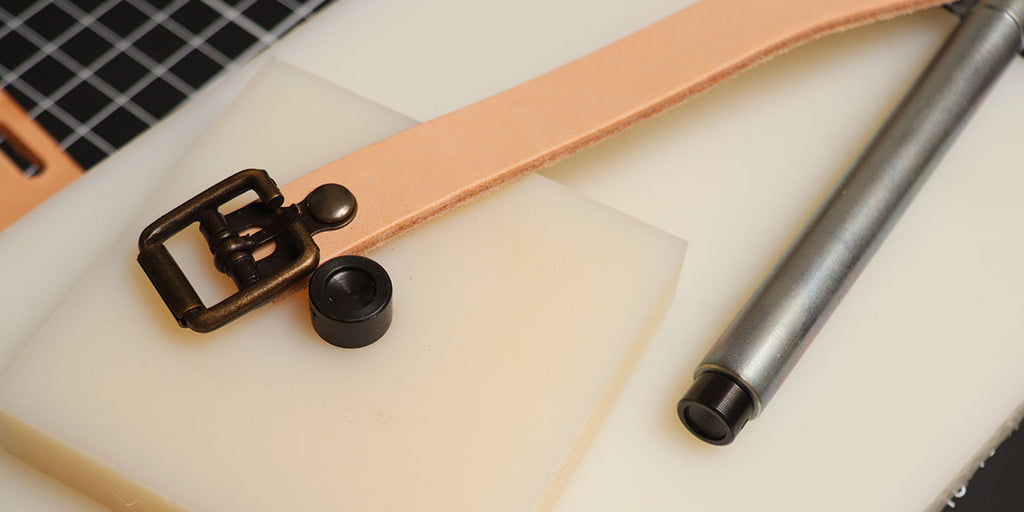
6. MAKE 5 HOLES ON THE STRAP
Using a 3mm cookie cutter, make 5 holes at the other end of the strips (1st hole 1.5 cm from the edge then every 2 cm). 
7. HIT THE 3D MINI STAMP
Wet the strip with a sponge and a little water and hit the mini 3D stamp. 
8. WORK THE SLICES OF LEATHER
Before applying tragacanth gum, sand the edges at 45°. 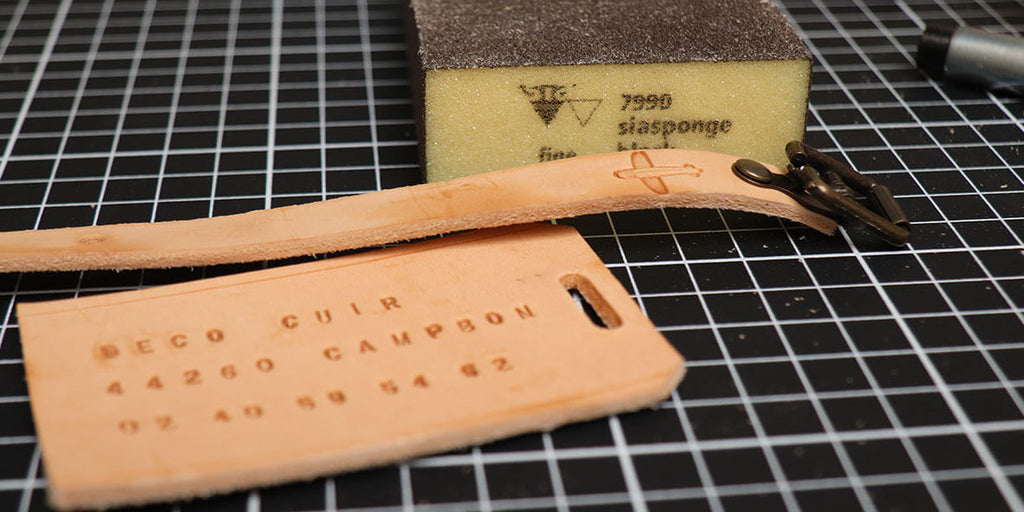
9. FINISH THE SLICES
Apply the gum tragacanth to the slices of leather and rub vigorously with a cloth. 
10. NOURISH THE LEATHER
Feed the leather with a little neatsfoot oil or nourishing milk. 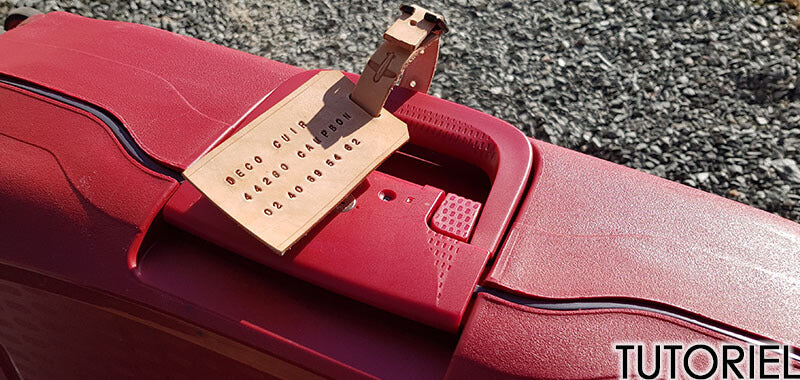
LABEL #2
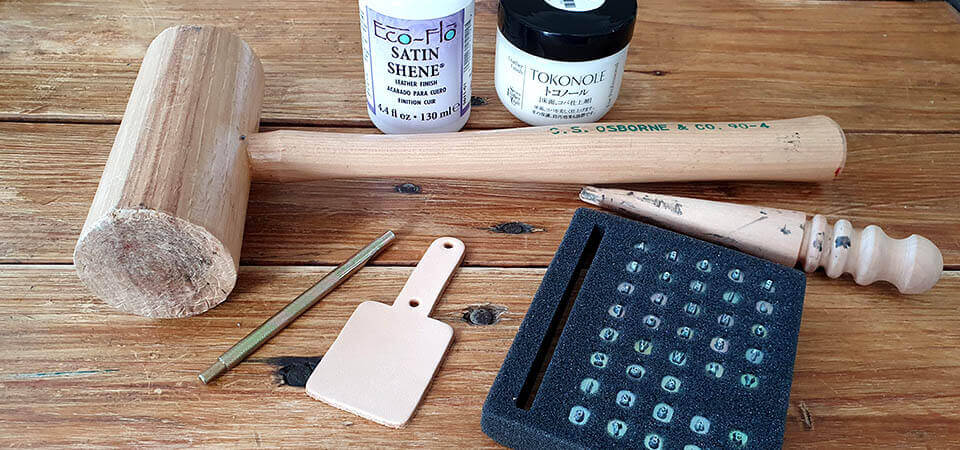
You will also need olive oil to dye vegetable tanned leather.
1. HUMIDIFY VEGETABLE-TANNED LEATHER
Wet the vegetable tanned leather with a sponge and a little water. 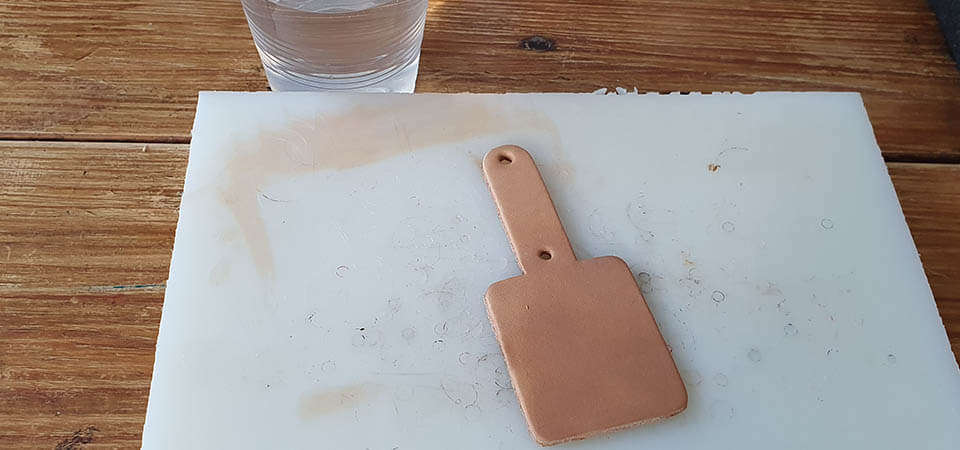
2. HIT THE STAMPS ON THE LEATHER
Strike the letter and number stamps using the stamp guide and a mallet. 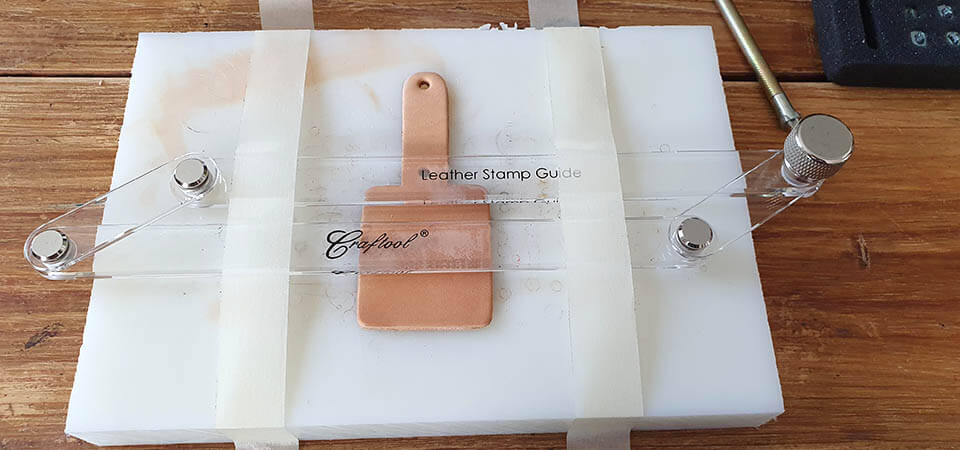
3. TINTING THE LEATHER WITH OLIVE OIL
Using a wide brush, soak the leather with olive oil.
Put at least 2 coats trying to put the same amount of oil everywhere.
Let the oil soak into the leather for at least a day and if possible in front of a window in direct sunlight. 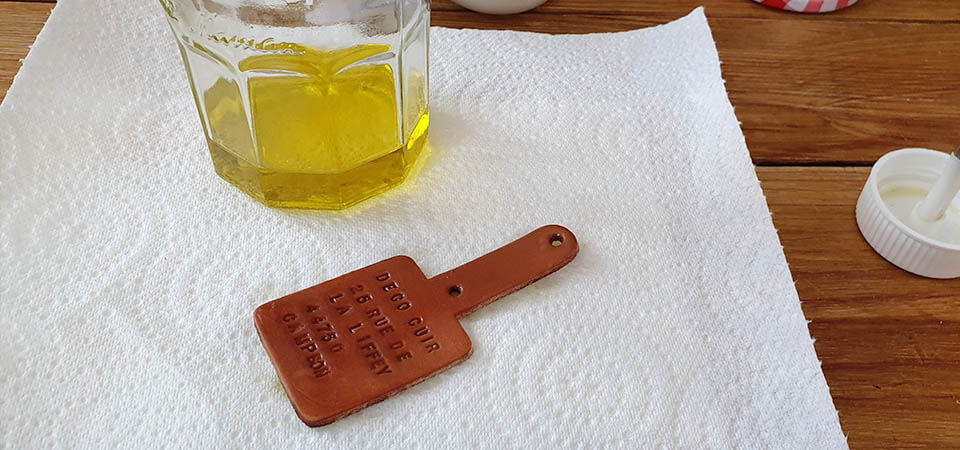
4. PROTECT LEATHER WITH SATIN SHENE
Apply Satin Shene (matte finish) evenly all over the leather to protect it. Satin Shene also exists in a shiny version: Super Shene. 
5. WORK THE SLICES WITH TOKONOLE
Work the edges of the leather with tokonole or tragacanth gum and rub them with a wooden smoother (see the video on our blog). 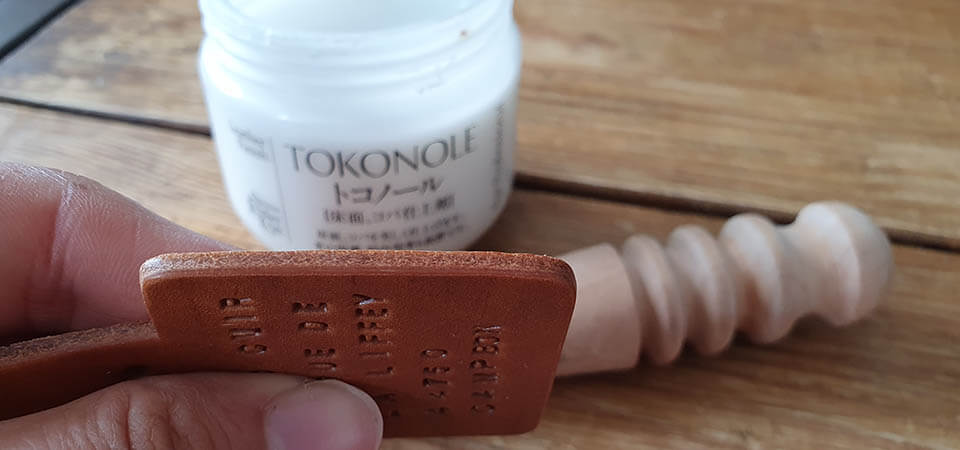
6. PLACE A T3 RIVET ON THE KEY RING
Fold the tongue of the leather key ring back on itself then fit a T3 double-cap rivet. 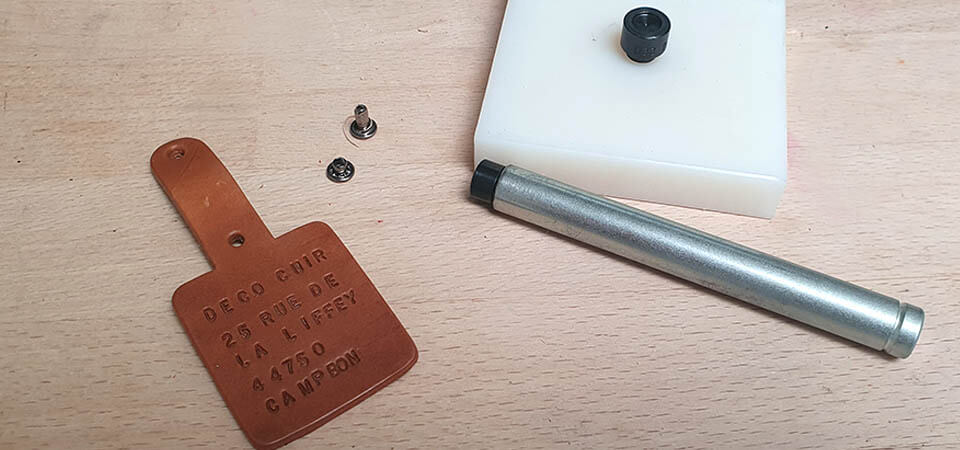
7. FINISH YOUR LEATHER KEY RING
You can add a round carabiner to your key ring so you can attach it to your suitcase.
We also invite you to nourish your leather with neatsfoot oil or nourishing milk.
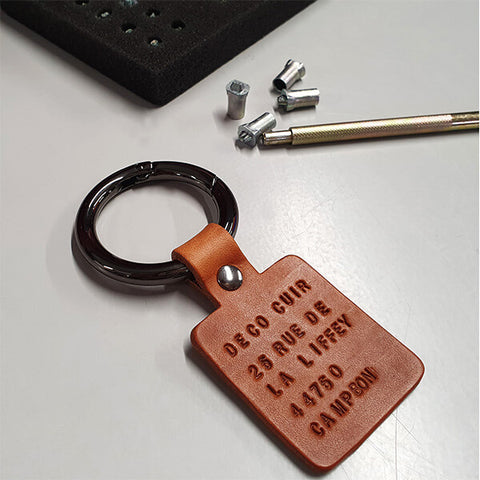 |
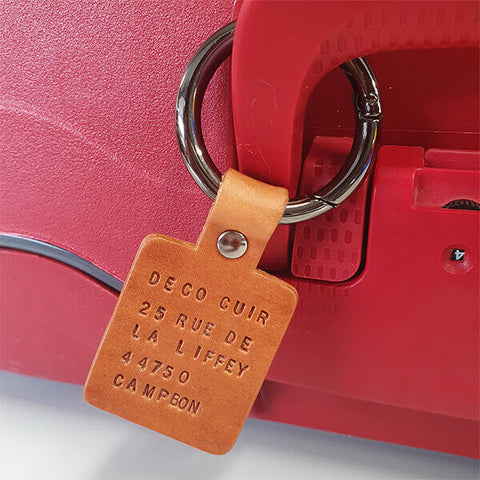 |
LABEL #3
1. CUT THE PIECES
Using the silver pencil trace the main piece. Cut out the rectangles using a ruler and a cutter. 
2. MAKE 2 3 MM HOLES
Make the 3 mm holes (indicated on the pattern). 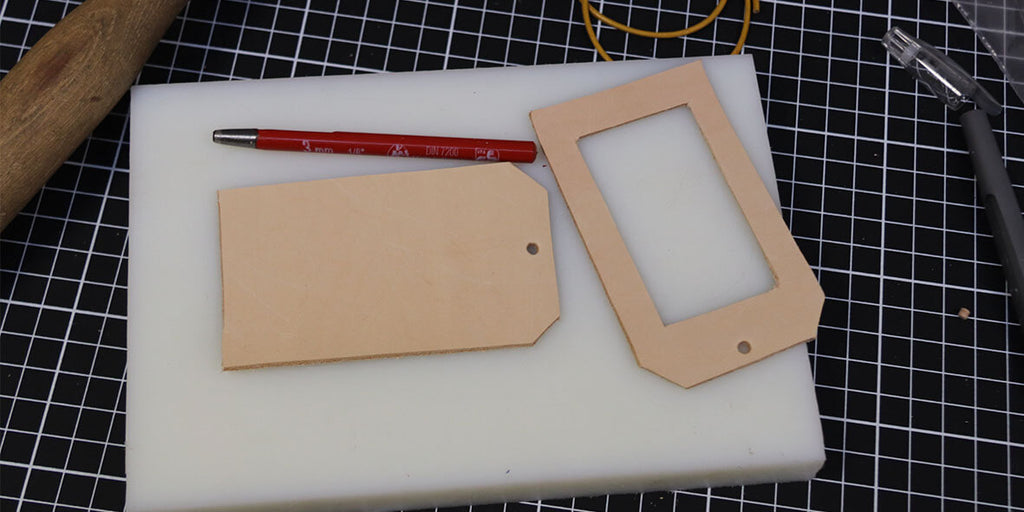
3. GLUE THE RECTANGLES TOGETHER
Glue the rectangles together (using neoprene glue). Do not put glue on the lower end and leave 5 mm to the right and left of the central rectangle.
The little + : square off the sides that will not be assembled to give a more finished side to your slices. 
4. PUT DOUBLE-FACED BEHIND DECORATIVE PIECES
Put double-sided behind the decorative pieces and glue them. The decorative pieces (pineapple) were made with scraps of soft leather. 
5. SLIDE THE LABEL
Slide the label between the 2 pieces of leather. 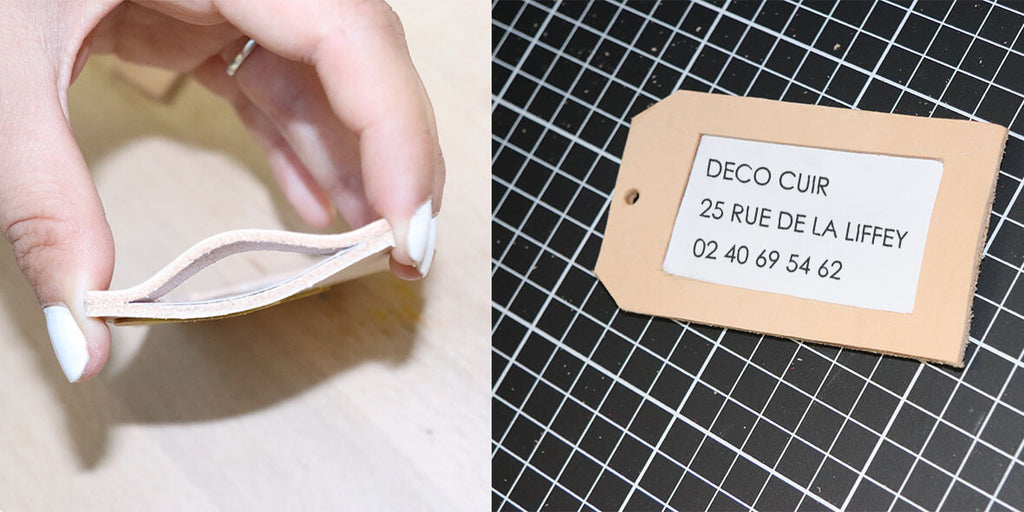



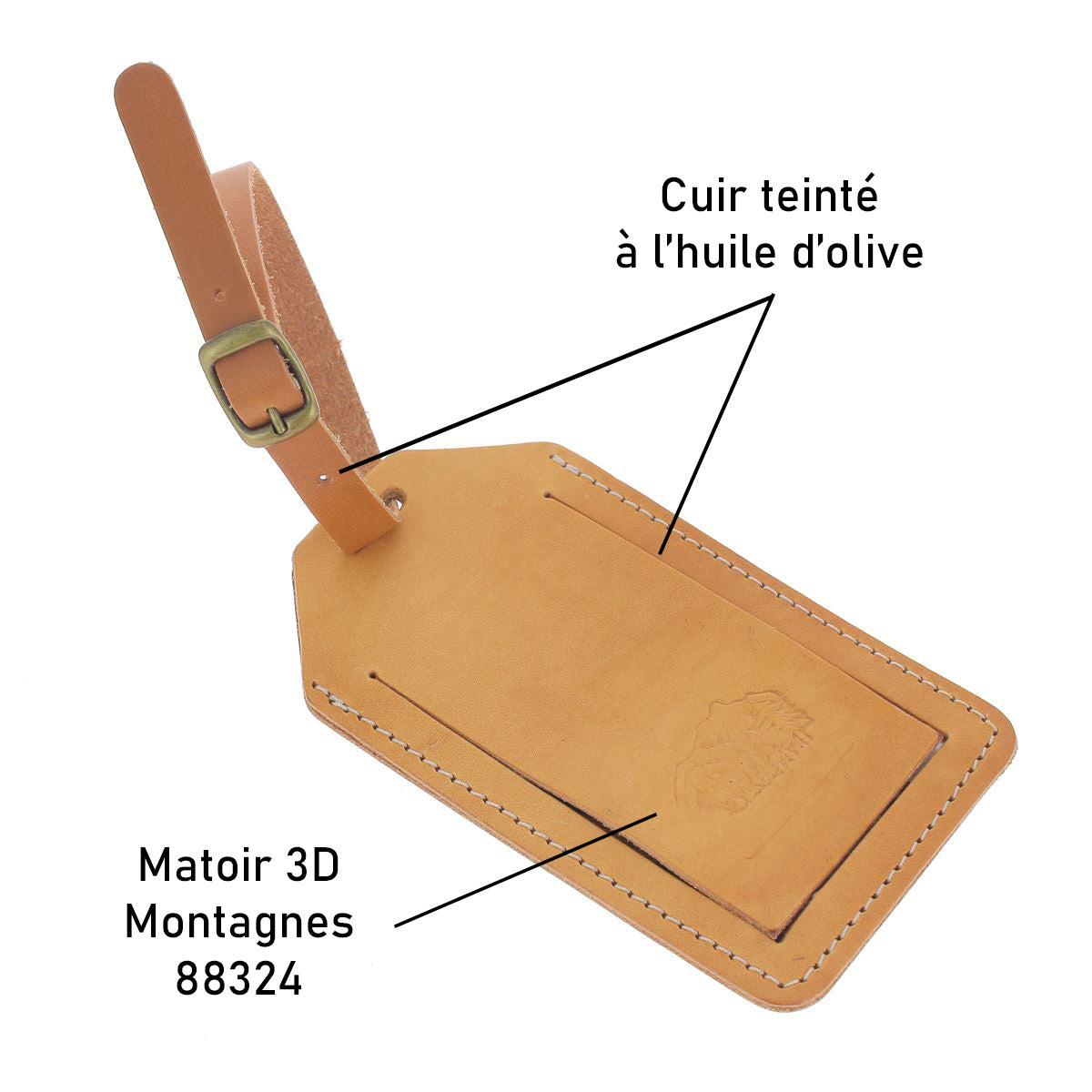
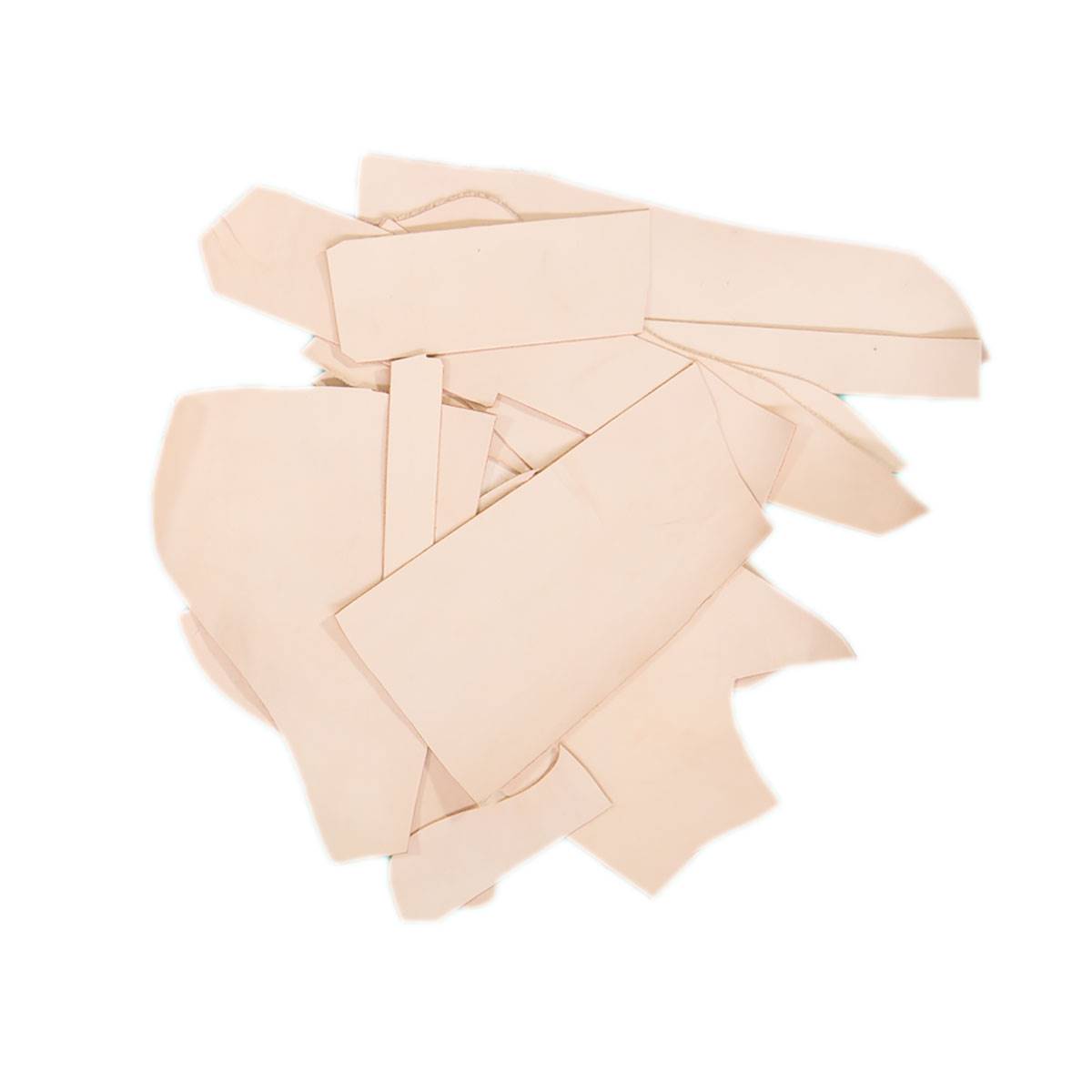





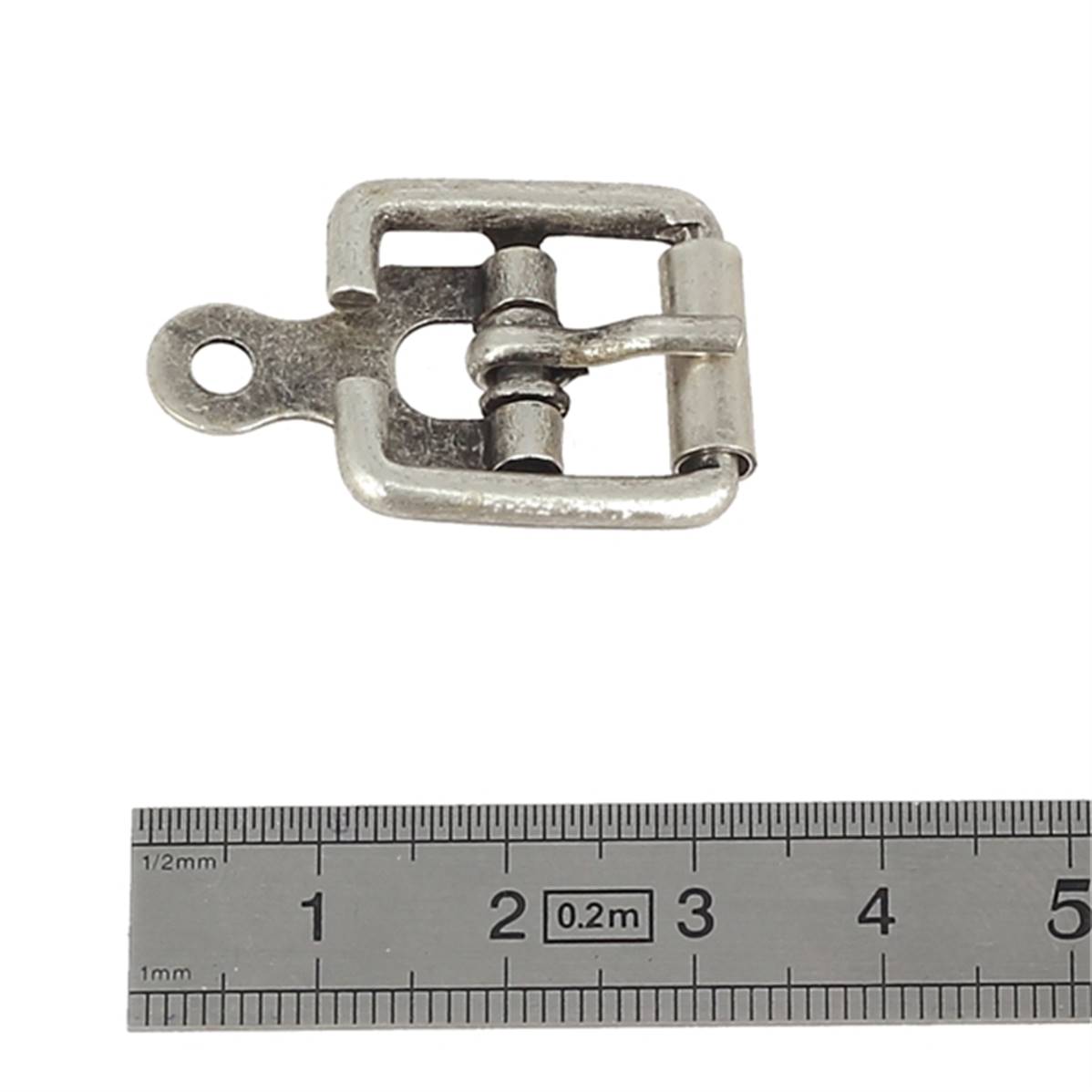






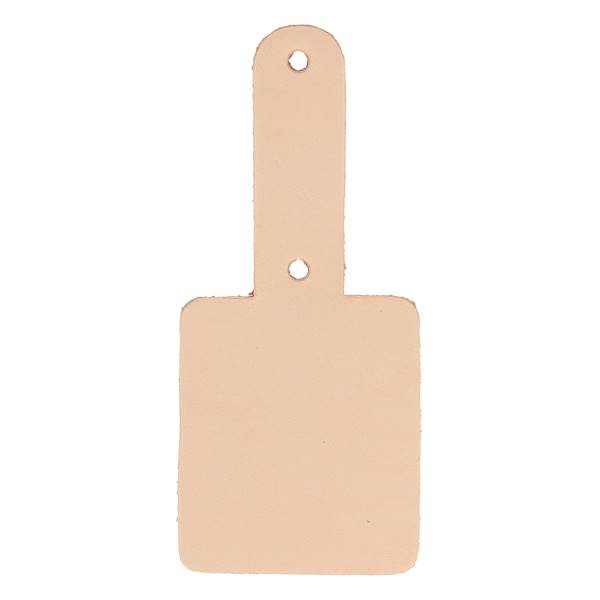





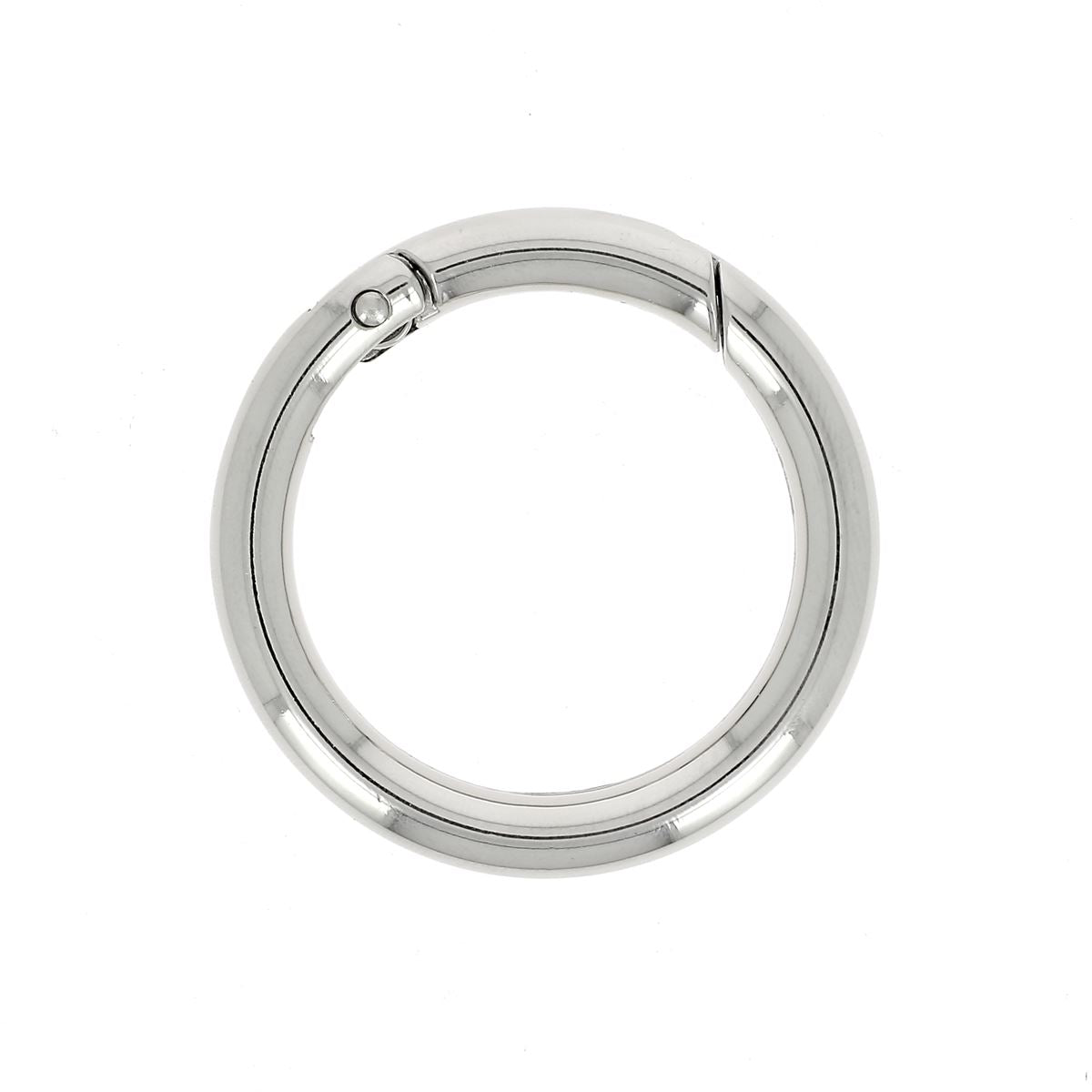






2 comments
Anonymous
Bonjour Hochart,
Totalement, nous vendons le plastique transparent ici : https://www.decocuir.com/products/100-feuilles-plastique-transparent-mica-a4
Bonne journée,
L’équipe Deco Cuir
Hochart
Pour l’étiquette n° 3 vous pouvez insérer un film plastique transparent pour protéger votre étiquette papier entre les 2 couches de cuir